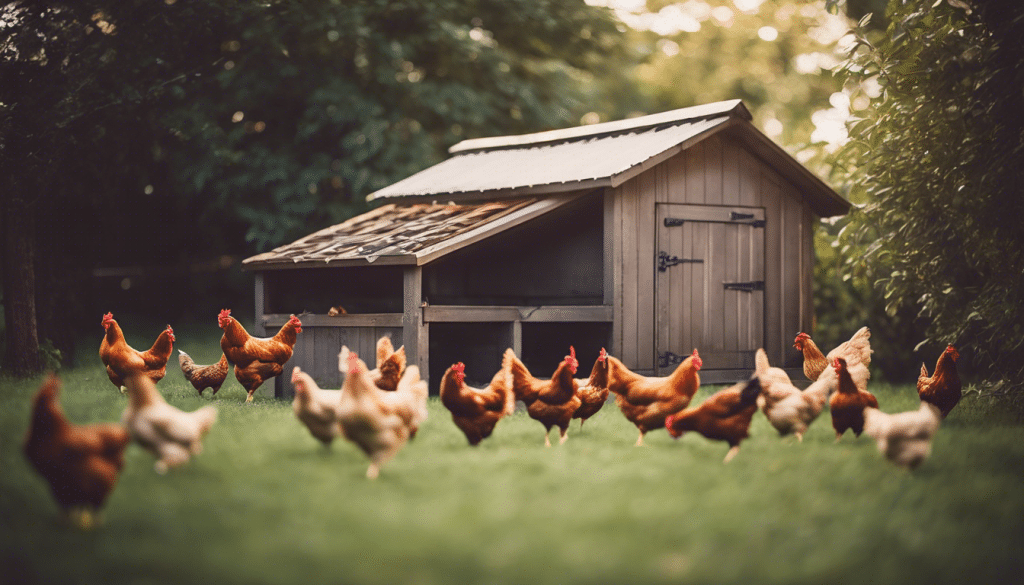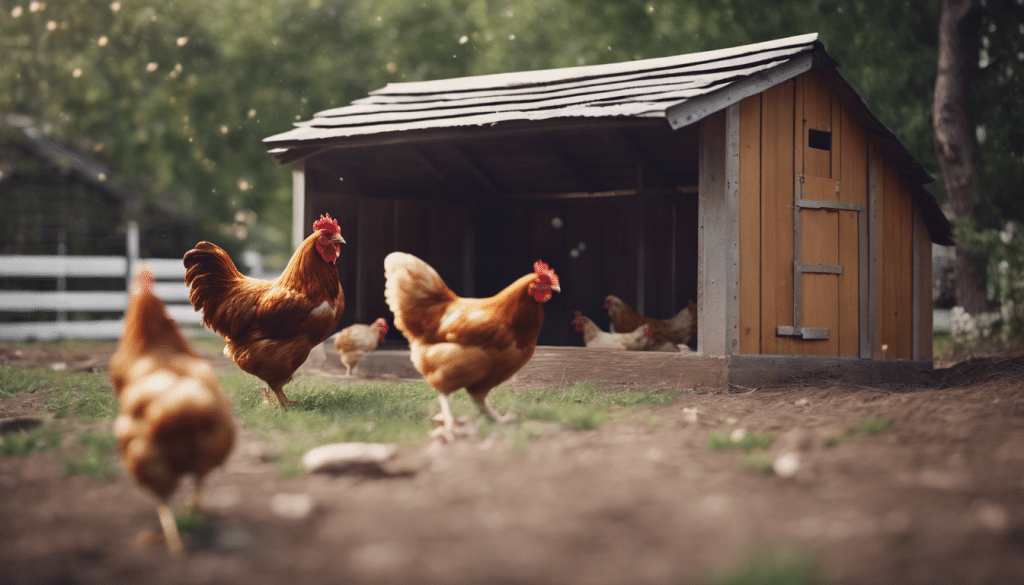Understanding Common Chicken Coop Pests and Predators
Identifying Common Threats to Your Flock
Caring for backyard chickens means staying vigilant about potential risks in the coop. When we talk about common chicken coop pests and predators, we’re referring to a diverse group of creatures that can harm your chickens or disrupt the harmony of your backyard ecosystem. Understanding who these unwanted visitors are is the first step in protecting your flock.
Preventing Damage and Disease from Pests
Insects and parasites, such as mites, lice, and fleas, are among the primary pests that can infest coops, causing discomfort and illness among chickens. Regular cleaning and actions like dust-bathing areas for your chickens are essential in managing these pests. Chemical treatments may be necessary in severe cases, but always consider the potential impact on your chickens and the environment before using.
Thwarting Smaller Rodent Intruders
Rodents like rats and mice are not just a nuisance; they can consume chicken feed, contaminate the environment, and even spread diseases to your flock. It’s important to secure your feed in rodent-proof containers and ensure that the coop is devoid of any small gaps through which these creatures might enter. Remember, an ounce of prevention is worth a pound of cure when it comes to keeping out these cunning invaders.
Deterrents for Larger Chicken Coop Predators
Larger predators such as raccoons, foxes, and birds of prey pose significant threats as they can injure or kill chickens. To protect against these, reinforcing your coop’s structure with sturdy wire mesh and secure locks is key. Additional deterrents like motion-activated lights or even guard animals can provide extra layers of safety for your chickens.
The Subtle Signs of a Predator Attack
Understanding the signs of an attack can help you identify and respond to a predator problem swiftly. Look for obvious indicators such as missing birds, scattered feathers, or damaged enclosures. However, also be aware of more subtle hints like increased stress behavior in your chickens or unexplained egg loss, which might indicate the presence of a more discrete predator or pest.
Creating a Predator-Resistant Coop and Environment
A predator-resistant coop isn’t just about a robust structure; it’s also about the environment you create. Keeping grass and vegetation trimmed around the coop eliminates hiding spots for predators. Additionally, consider using fencing to create a secure outdoor run where your chickens can enjoy the outdoors while staying protected.
Considering Natural Pest and Predator Controls
Harnessing natural pest and predator control methods is an eco-friendly alternative to chemicals and traps. Introducing predator deterrent plants, such as lavender and rosemary, can repel insects, while an owl box might attract a natural predator of rodents. It’s essential to understand the balance of your local ecosystem and engage with it thoughtfully.
Regular Coop Maintenance to Keep Pests at Bay
Ongoing coop maintenance plays a pivotal role in pest control. This includes tasks like regular cleaning of the coop, removal of soiled bedding, and checking for signs of wear and tear on the enclosure that might offer entry points for pests. Ensuring that your coop stays in top condition is a constant commitment that pays dividends in the health and happiness of your flock.
Designing a Predator-Proof Chicken Coop

Raising backyard chickens can be a delightful experience, but it comes with its fair share of challenges, especially when it comes to protecting your flock from predators. A secure and well-designed chicken coop is not just a luxury but a necessity. Here’s a comprehensive guide to creating a predator-proof chicken coop that keeps your feathered friends safe.
Understanding the Predatory Threats
Before constructing a fortress for your chickens, it’s vital to understand the potential predators in your area. Local wildlife such as foxes, raccoons, hawks, and even neighborhood dogs can pose a threat to your chickens. These animals are often clever and persistent, which means your coop’s defences need to be robust and well thought out.
Fortifying the Foundation
A predator-proof coop starts with a solid foundation. Digging predators like foxes can easily breach a chicken coop from below. To deter them, install a hardware cloth or galvanized wire mesh beneath the coop and extend it at least 12 inches out from the perimeter. This creates a buried barrier, making it difficult for predators to dig their way in.
Secure the Perimeter
The enclosure of your coop should be constructed with strong materials that resist tearing and chewing. Use heavy-duty hardware cloth instead of chicken wire, as the latter can easily be compromised. Ensure that the mesh is fine enough to prevent predators from reaching in and that all gaps and entrance points are secure.
Reinforce Entry Points
Doors and windows are common weak spots in many coops. Fit these with sturdy latches, and consider double locking mechanisms for additional security. Latches that can be easily manipulated by intelligent predators like raccoons should be avoided. Similarly, windows should be fitted with predator-resistant screens or covered with hardware cloth.
Elevate Against Unwanted Guests
Elevating your chicken coop off the ground can significantly reduce the risk of predator attacks. An elevation of at least 2-3 feet makes it harder for animals to gain access and provides an additional layer of security for your chickens.
Covering the Coop
Many predators can strike from the air, so it’s important to have a covered run. A sturdy roof or wire mesh covering will provide the necessary protection from aerial predators like hawks and owls. Always ensure that there are no gaps or weak points where a predator could slip through.
Implement a Double-Door System
To minimize the chance of chickens dashing out into the open and becoming easy prey, consider installing a double-door system. This serves as an extra security checkpoint, reducing the chances of accidental exposure to predators.
Secure Coop from the Inside Out
Finally, secure the coop from within by creating safe roosting spaces and nesting boxes that are out of reach of any predators that might get inside. Additionally, regularly check and maintain your coop for any potential breaches or weak points.
This meticulous attention to detail ensures that a protective barrier is always in place, safeguarding your chickens day and night against the threats of the wild. By investing time and resources into a resilient, predator-proof chicken coop, you provide a safe habitat for your chickens, peace of mind for yourself, and a long-lasting haven for your backyard farm.
Implementing Effective Pest Control Strategies

Effective Pest Control in Chicken Coops
Maintaining the health and safety of backyard chickens requires an effective pest control strategy. Pests can introduce diseases, stress out your birds, and compromise the overall hygiene of the coop. Implementing an integrated pest management plan will ensure you tackle any potential problems while maintaining an environment that’s conducive to your flock’s well-being.
Understanding Common Poultry Pests
Before diving into control strategies, it’s essential to understand what pests pose a risk to your chicken coop. Rodents like rats and mice can be attracted to feed and bedding, while insects such as mites, lice, and flies are drawn to the warmth and moisture. Each pest comes with its challenges and methods for control and prevention.
Sanitation as the First Line of Defense
Good sanitation practices form the cornerstone of pest control. Regular cleaning of the coop, including the removal of old bedding, droppings, and spilled feed, can significantly reduce the likelihood of attracting unwanted guests. Keep stored feed in sealed containers and eliminate standing water where mosquitoes may breed.
Physical Barriers and Maintenance
Physical barriers can be an effective way to keep pests out. Ensuring that your coop is structurally sound with no gaps or holes is essential. Hardware cloth is a superior material compared to chicken wire, as it’s more durable and able to prevent small rodents and large insects from squeezing through.
Natural Repellents and Solutions
Incorporating natural repellents into your chicken coop can also deter pests. Herbs like mint, lavender, and lemongrass are known to repel insects and can be planted around the coop or used in dried form inside nesting boxes. Diatomaceous earth can be used in dust baths to control mites and lice but should be applied carefully to avoid respiratory issues in your flock.
Regular Inspections and Monitoring
Regularly inspect your coop and flock for signs of pest infestation. Early detection can prevent an infestation from becoming unmanageable. Keep an eye out for droppings, damaged feed bags, or the presence of insects on the birds themselves. Regular health checks on the flock can also help identify problems early on.
Strategic Coop Design for Pest Management
The design of your chicken coop can also play a key role in pest control. Elevated coops prevent some predators and rodents. Nesting boxes should be designed to be easily accessible for cleaning and monitoring. Proper ventilation helps to keep the coop dry and less attractive to pests.
Integrated Pest Management Approach
An integrated pest management (IPM) approach combines cultural, physical, and chemical strategies to manage pests. It’s about using the best combination of methods for your specific situation. If chemicals are used, they must be selected and applied carefully to minimize the impact on your chickens and the environment.
Effective pest control in a chicken coop ensures the health of your flock and the quality of their environment. Starting with prevention and employing a combination of methods can help keep your coop free from pests and the issues they bring. Consistency and vigilance in your pest control strategies will provide a safe and healthy home for your backyard chickens.






